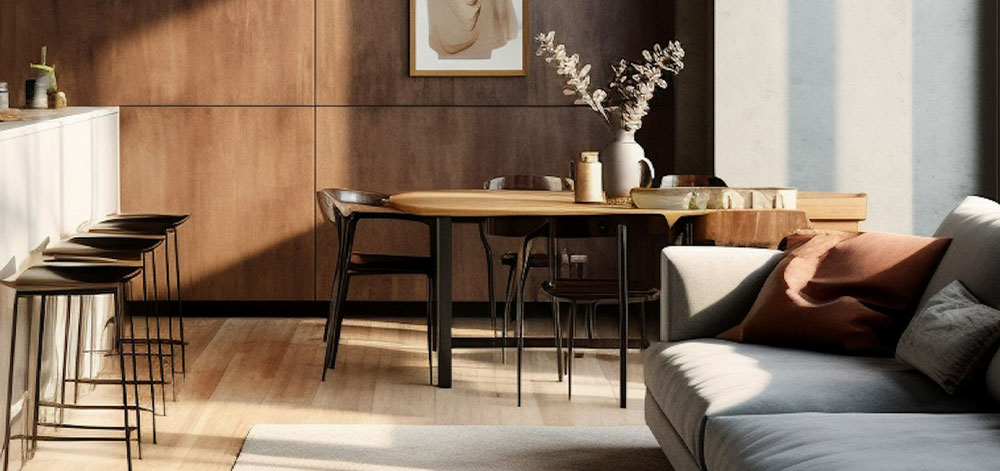How Did European Design Shapes North American Homes | FLOORMAKER
How Did European Design Shape North American Homes
Introduction
The question How Did European Design Shape North American Homes has become increasingly important for global B2B buyers, architects, and construction material suppliers. European architecture has influenced North American homes for nearly four centuries, shaping both structural form and interior style. Today, this cross-continental design connection continues to define flooring trends, building materials, layout preferences, and sustainability standards across the United States and Canada.
This article examines how European design shaped North American homes, tracking historical development, market evolution, technological influence, and material specifications that remain relevant to modern construction.
Historical Influence on North American Housing
Early Settlements and Architectural Transfer
European settlers brought building traditions from England, France, Spain, and the Netherlands. Their construction patterns directly shaped early North American homes through:
Timber-frame English cottages
French Colonial raised-housing structures
Dutch gabled roofs
Spanish stucco and clay-tile systems
These styles blended with regional climates and available raw materials, establishing the foundation of North America’s residential identity.
Industrial Expansion and Mass Adoption
During the 19th and early 20th centuries, industrialization allowed European design concepts to spread rapidly. Manufactured lumber, standardized hardware, and pattern books helped Victorian, Tudor, Georgian, and Craftsman-inspired homes dominate North American neighborhoods. This era solidified a long-term dependence on European structural logic and decorative aesthetics.
How European Design Shapes Modern North American Homes Today
Aesthetic Preferences
Modern North American homeowners frequently choose design styles strongly influenced by European culture, including:
Scandinavian minimalism
German-engineered interior systems
French-country kitchens
Mediterranean villa features
These styles align with rising demand for simplicity, natural textures, and long-term durability.
Material & Manufacturing Trends
European design continues to shape North American homes through product specifications such as:
Parquet and herringbone floor patterns
Wide-plank laminate and engineered wood
Neutral, stone-like finishes
EIR textured surfaces
High-performance coating technologies
These material trends dominate flooring, wall panels, prefabricated housing, and interior furnishings.
Sustainability & Energy Efficiency
Europe’s strict environmental standards have strongly influenced North America’s shift toward eco-friendly building systems. This includes:
Reduced-VOC materials
Recyclable composite cores
Insulated building envelopes
Energy-efficient windows
These features have become standard expectations for modern homes across Canada and the U.S.
Technical Elements Derived From European Design
1. Structural Engineering Concepts
European influence introduced techniques such as multi-layer flooring construction, cross-laminated timber, and composite structural materials—now widely used in North America for residential durability.
2. Functional Design & Spatial Efficiency
European cities with limited space developed compact layouts and efficient storage solutions. Today, these principles guide North American apartment and prefab-home design.
3. Advanced Surface Technologies
Europe pioneered several surface technologies later adopted by North American manufacturers:
UV coatings
High-pressure laminate systems
Embossed textures
Water-resistant cores
These improvements enhanced performance expectations in residential products.
4. Decorative & Historical Aesthetics
Even luxury homes in North America continue to adopt European-inspired façades and interior motifs, from Tudor-style exteriors to Italian-style stone flooring patterns.
Market Trends Driven by European Design Influence
Current market data shows strong demand for European-inspired materials in North America:
Over 65% of laminate flooring sales include oak patterns
Parquet and herringbone installations grow annually
Minimalist Scandinavian palettes dominate renovation projects
Demand for textured laminate, SPC, and engineered surfaces increases steadily
These indicators show that European design continues shaping North American homes at both structural and aesthetic levels.
Applications in B2B Construction Sectors
Flooring Manufacturing
Producers supplying the North American market increasingly develop flooring with European-style patterns, matte finishes, and durable multilayer construction.
Prefabricated & Modular Housing
Modern prefab builders use European-design space optimization, energy management, and minimalistic structure principles.
Interior Finish & Decorative Panels
Natural wood tones, stone aesthetics, and neutral palettes remain essential for large-scale construction projects and commercial housing developments.
FAQ
1. Why does European design have such a strong influence on North American homes?
Because early settlements, industrial design transfers, and modern aesthetic preferences have continuously integrated European architectural principles.
2. Which European styles are most popular in North America?
Scandinavian minimalism, German engineering-inspired modernism, Mediterranean villa design, and French-country interiors.
3. Does European design affect material specifications?
Yes. Many North American flooring, wall panel, and prefab housing materials are based on European construction principles and textures.
4. Are European-style homes more expensive?
Not inherently. Efficient layouts, engineered materials, and durable composite systems reduce lifecycle cost for many projects.
Conclusion
Understanding how European design shaped North American homes provides valuable insight for international buyers seeking to enter or expand within the North American construction market. From historical roots to modern material innovation, European architecture remains central to North American residential development.
We offer technical consultation, material recommendations, and supply solutions for companies seeking to align with North American design standards. Contact us for specifications or collaboration opportunities.







